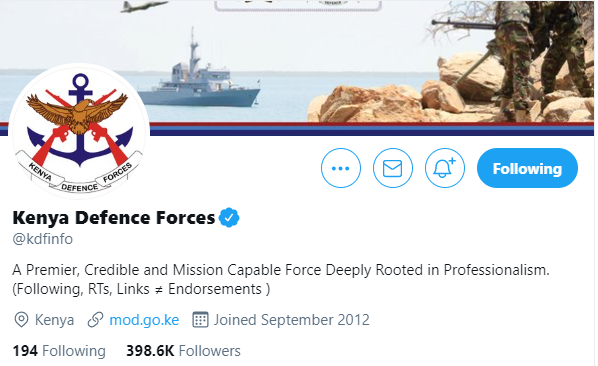By Alfred Ng’ang’a
NAIROBI, Kenya, Feb 25- A few decades ago, while growing up within the environs of military barracks’ in Nanyuki town, I remember my deep admiration of the disciplined forces.
The military formations in Nanyuki— the Kenya Defence Forces (KDF), the Army and Airforce as well as the British Army training units—all have a special place in the hearts of the Nanyuki folk and beyond.
Many of my schoolmates, now in their 40s will recall our first visit to Nairobi city aboard a military Buffalo plane with brimming nostalgia. The free rides were among the activities that took place during the much-loved air force days at the Laikipia Airbase.
Of course, the visit to Nairobi would be aerial only as we never got to land. That, however, didn’t blunt the fun since the officers on board would proudly point out to us such features as Mt. Kenya, the majestic KICC and Uhuru Park grounds before turning and heading back to our beloved Nanyuki.
Memories of my yesteryear encounter with the Kenya Defence Forces crept back this week as I pondered on how this important institution has come of age over the years.
In particular, I am impressed by the efforts KDF has made to make their communications more effective and responsive to their target audiences.
As a Corporate Communications practitioner, I am genuinely awed by the evolution of KDF from the closed institution it was in the 80s and 90s to what it has gradually metamorphosed into.
The KDF we knew back then had hardly entertained public engagement. Indeed, we viewed it as a stiff-necked institution averse to opening up to the public. Save for the Airforce Days that somehow ended in the mid-90s, community engagements weren’t publicised or highlighted as openly as they are currently.
Today, a keen communications practitioner will easily note that KDF is one of the most active public institutions even on Twitter and Facebook with constant updates. In coming days, it will auger well with KDF’s image building if the men in uniform allow media interviews to be part of their public communications menu.
KDF has just commenced its national recruitment exercise, and this time around, the public engagements feature the contemporary storytelling approach in Corporate Communications.
Storytelling is a crucial pillar, particularly in Development and Brand communications. It helps the audience relate to information shared.
On their YouTube page, KDF has this exciting Video documentary titled “A KDF Soldier”.
The docu tells a relatable story on the current recruitment exercise. Yes, KDF has one of the most informative YouTube channels with professionally produced documentaries, but I digress.
Coming back to the recruitment documentary, KDF has done a good storytelling job taking the audiences through the steps that recruits go through once picked for training.
For those of us who grew up enjoying Police Academy VHS videos, this one evokes memories but refreshes the pride of KDF’s training and professional practices.
With this one video one appreciates the academic and related depth of KDF training with the Commandant and instructors’ teams explaining various phenomena including career development, marksmanship, drill and duty, fieldcraft and physical fitness lessons all which the recruits undertake to become professional soldiers.
Use of storytelling is variously cited as an effective avenue for connecting and winning the trust of audiences. It is delivered in various forms including audio-visual media, print outputs, digital channels including websites and social media platforms and, of course, good old dramatised skits.
Alongside KDF, organisations such as Safaricom with their newsroom content channel and the Kenya Revenue Authority (KRA) who have recently introduced a Podcast channel (alongside Nation Media Group) are just some early adopters for this contemporary form of communication.
At the global stage, the World Health Organisation (WHO) under its Communicating for Health Strategic Framework for Effective Communications identifies storytelling as a critical pillar that enhances the comprehension and retention of crucial messages. Clearly storytelling is an effective messaging tool.
By applying real health-related stories that bring a human face to health needs, telling how WHO protects the health of its target audiences while inspiring people with success stories.
That way, audiences easily identify with the organisation. Further, showcasing decision-makers who have first-hand testimony of the health gains they have reaped as a result of WHO’s advice, this global health organisation’s corporate communications goals are easily understandable.
Learning from the WHO framework, storytelling needs to encompass the use of familiar and understandable languages (including sheng where necessary) and audio-visual tools that present information with illustrations, images, infographics and videos.
For local organisations right across the entire spectrum of sectors they serve, the time to adopt modern communication approaches such as storytelling and infographics is now.
Want to send us a story? Contact Shahidi News Tel: +254115512797 (Mobile & WhatsApp)



